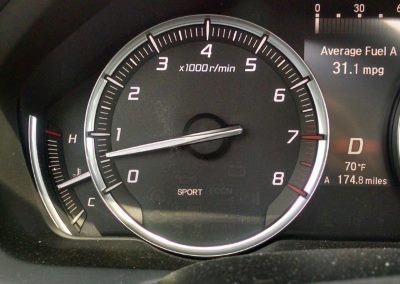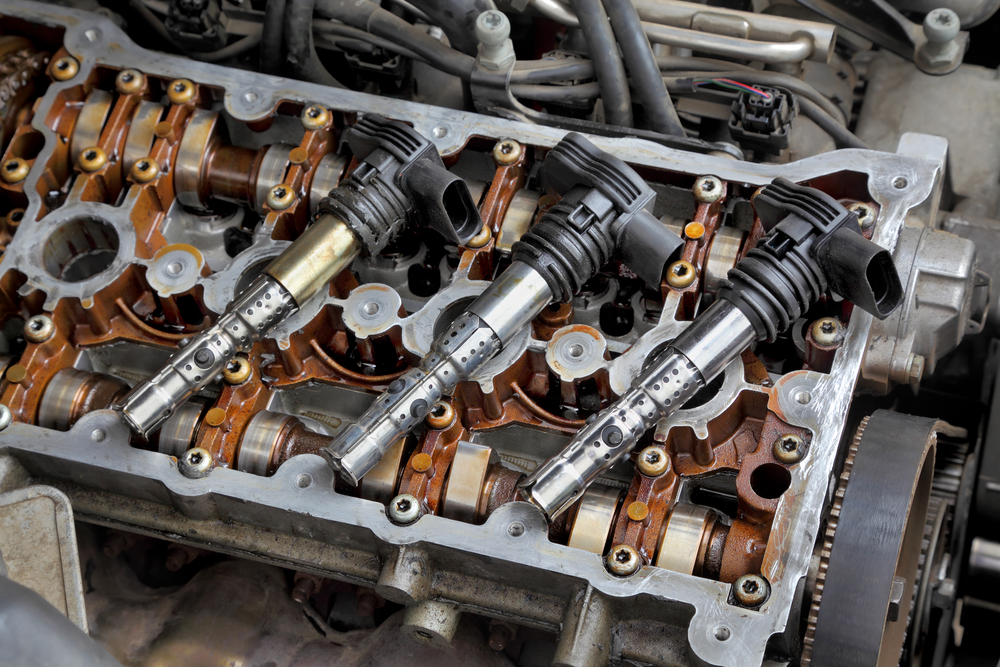Signs of Bad Heater Core in Car
Signs of a bad heater core include a sweet smell inside the car and foggy windows. Coolant leaking onto the passenger side floor is another indicator.
Dealing with a malfunctioning heater core can be a significant inconvenience for any driver. It is a crucial component of your vehicle’s heating system that allows warm air to flow inside the cabin. Recognizing early symptoms, like unexpected interior fogging and a distinct sweet odor, points to a heater core issue.
These signs often precede more serious concerns, such as overheating engines or visible coolant leaks inside your vehicle. Being aware of these indicators ensures you can address the problem before it escalates into expensive repairs. Attention to such details not only keeps your car in top condition but also ensures a comfortable and safe driving experience.
Early Warning Signals Of A Failing Heater Core
The heater core is a key component of a car’s heating system. It works like a small radiator that uses hot coolant from the engine to warm up the cabin. But when it fails, it hits comfort and safety. Let’s explore the early signs that your car’s heater core may be on the decline.
Lack Of Heat During Cold Days
Feeling chilly even with the heat on full blast? A failing heater core can’t provide enough warmth. Here’s why:
- Coolant doesn’t flow well.
- Heater core struggles to transfer heat.
- Warm air doesn’t reach the cabin.
Foggy Windshield And Interior Windows
Steam inside your car could signal trouble. A broken heater core allows coolant to seep out and vaporize:
- Windows fog up.
- Visibility drops.
- Driving becomes risky.

Credit: www.mosautoshop.com
Coolant Issues And Heater Core Dysfunction
Think of your car’s heater core as a cozy campfire for your vehicle’s heating system. When your toes need toasting on a freezing drive, this little box of warmth is your best friend. But when things go south, knowing the signs of a bad heater core can save your trip from turning into an ice-cold adventure. Let’s dive into the telltale signs related to coolant issues that signal your heater core might be on the fritz.
Unexplained Coolant Loss
Coolant doesn’t just vanish. It’s a sealed system, so when levels drop, take note. If you’re topping off the reservoir more often than usual, a faulty heater core could be the culprit. Here’s how you can tell:
- Puddles under the car? This could be coolant.
- Low coolant light flashing? Don’t ignore it.
- Rapid temperature changes? Your heater core could be leaking.
Don’t let disappearing coolant take you for a ride. Regular checks can spotlight a leak early.
Sweet Smell Inside The Car
If you catch a whiff of something sweet and syrupy inside your cabin, it’s not last week’s forgotten candy bar. It could be a sign your heater core is leaking. Coolant has a distinctive, sweet odor, and when it leaks, this smell can seep into your car. Here’s what to sniff out:
- Sweet scent when the heat is on? That’s a red flag.
- Does the smell get stronger near the vents? That could mean your heater core is the source.
Don’t turn a blind nose to these smells. They can lead you straight to the heart of the issue.
Physical Indicators Of A Compromised Heater Core
Your heater core plays a crucial role in keeping you warm on cold drives. It also helps your engine stay cool. But when it fails, your comfort and car performance can take a dip. Let’s explore signs that suggest your heater core might be giving up.
A heater core in trouble will show clear physical signs. Knowing these signs can save your car from bigger issues.
Coolant Puddles Under Dashboard
If you see an odd puddle inside your car, especially under the dashboard, take note. This liquid might seem like water but could be coolant. It’s a key sign that your heater core leaks.
A sticky residue or a sweet smell can often accompany the puddle. Don’t ignore it. Address it fast to avoid damage to your interior and the core.
Overheating Engine
Watch your car’s temperature gauge. A rising temp could mean your heater core is failing to regulate heat. The engine could overheat without that help.
An overheating engine risks major damage. It’s a sign to check your heater core swiftly.
Auditory Clues: Unusual Sounds
When your car’s heater core has issues, it often gives off telltale sounds. Your car’s interior becomes a concert of sorts, with a variety of noises indicating potential problems. Stay alert for the following noises that suggest your heater core may need attention.
Gurgling Noises Behind The Dashboard
A gurgling sound emerging from behind the dashboard can be a clear warning sign. It suggests that air is trapped in the heater core. Here’s why this matters:
- Air bubbles disrupt coolant flow.
- This can reduce heating efficiency.
- It might lead to overheating.
Sounds Of Liquid Flowing
If you hear the sound of water flowing through the car’s interior, it’s time to investigate. This noise could point to a leak within the heater core. Ignoring this sound can lead to:
| Consequence | Reason |
|---|---|
| Coolant loss | Leakage depletes the system. |
| Damage to vehicle parts | Coolant can corrode components. |
| Foul odors | Coolant has a sweet smell. |
When To Consult A Professional
Discovering signs of a malfunctioning heater core in your car can be troublesome. Knowing when professional help is required is crucial. Let’s explore the indicators that signal the need for expert attention. A heater core problem can escalate quickly, so early intervention by a professional could save time and money.
Persistent Symptoms Despite Basic Fixes
- Fog inside windows that doesn’t clear with defogging actions
- Low coolant levels even after topping up
- Cold air blowing when the heater is on
- Strange smells inside the car, hinting at a leak
- Overheating dashboard with no clear cause
These persistent problems suggest it’s time to seek a professional mechanic. Simple DIY solutions often prove inadequate for heater core issues.
Expert Diagnosis And Repair
A precise diagnosis from a professional is vital. They have the tools and know-how to determine the exact cause. A mechanic will:
| Check | Action |
|---|---|
| Coolant System | Pressure test for leaks |
| Heater Core | Inspect for clogs and damage |
| Hoses and Connections | Evaluate integrity and function |
Professional repair might include flushing, repairing, or replacing the heater core. Wait no longer; contact an expert to restore your car’s comfort and safety.

Credit: m.youtube.com
Preventive Measures And Maintenance Tips
To keep your car’s heater core in top shape, a preventive approach is best. Aim to stop problems before they start. Regular checks and maintenance ensure longevity. Here are some valuable tips to help you maintain your heater core.
Regular Coolant System Flushes
Over time, coolant can become contaminated. It’s much like the blood in your body. Dirty coolant can harm parts it flows through. Regularly flushing your coolant system is like giving your car a clean bill of health. Most mechanics advise a flush every 30,000 to 60,000 miles. But, check your car’s manual first.
Follow these steps for a coolant flush:
- Prepare your car by ensuring it’s cool and stable.
- Locate your radiator’s drain plug.
- Let the old coolant flow out and dispose of it safely.
- Fill with clean water, run the engine, then drain again.
- Top off with fresh coolant, checking for the right mixture.
Periodic Inspection By A Technician
Sometimes, your own eyes aren’t enough. Getting a professional technician to take a look can save you trouble. They spot issues you might miss. This means they’ll catch early signs of heater core problems.
A good rule is to schedule a check-up every time you get your oil changed. This could be every 3,000 to 5,000 miles, depending on your vehicle. A technician will inspect for leaks, blockages, and overall performance. This proactive step keeps your heater core efficient and functional.
Technician’s heater core inspection includes:
- Pressure testing the cooling system.
- Checking for coolant quality and levels.
- Inspecting for leaks inside and outside the car.
- Evaluating heater and defrost operations.

Credit: gandgautorepair.com
Frequently Asked Questions Of Signs Of Bad Heater Core In Car
What Are Typical Heater Core Failure Symptoms?
A failing heater core often leads to a cabin that won’t heat up, a sweet smell inside the car, foggy windows, and coolant loss. Check for dampness on the passenger side floor, as this could indicate a leak.
Can A Bad Heater Core Cause Engine Overheating?
Yes, a bad heater core can contribute to engine overheating. If the heater core is clogged or leaking, it can prevent efficient coolant circulation through the engine, leading to increased engine temperatures and potential overheating.
How Does A Heater Core Affect Car Performance?
While the heater core itself doesn’t directly influence performance, issues with it can indirectly affect your car. If it leaks coolant, it might cause engine overheating, which can lead to diminished engine performance or damage.
What Does Coolant Leaking From My Heater Core Look Like?
Coolant from a leaking heater core will generally appear as a bright-colored liquid—often green, orange, or pink—on the cabin floor, especially on the passenger’s side. It may also have a sticky consistency and a sweet odor.
Conclusion
Recognizing the signs of a faulty heater core is essential for any driver. Timely diagnosis can prevent costly repairs and ensure a safe, comfortable ride. Keep an eye out for unusual symptoms like foggy windows and sweet odors. Prompt attention to these warning signs can save your vehicle from major damage.
Drive smart and stay vigilant for a healthier car.






